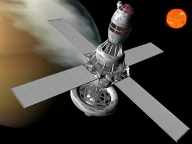What happens when the artificial satellites that different countries send into space for research run out of function?
Even then, the wreckage of all these canceled satellites orbits in space.
The International Space Station was about to collide with such a wreck.
This collision can be avoided by moving the space station a little bit in its own orbit.
U.S. and Russian flight controllers work together to avoid the impact of space debris or space debris.
The space station was given a little advance in a two-and-a-half-minute operation.
The wreckage is 1.4 kilometers (about a mile) away from the International Space Station, NASA said.
To avoid a collision, the International Space Station was slightly moved into orbit, which is the 2016 Japanese rocket.
Astronomist Jonathan McDowell said the rocket broke into six pieces last year.

Three astronauts from the International Space Station were moved to the spacecraft.
So if they understand the danger, they can move away from there.
After everything was settled safely, they went back to their routine work at the space station.
The space station orbits 260 miles or 420 kilometers above the earth.
It orbits the earth at a speed of 16,000 miles per hour.
Collision with a small object can cause serious damage to the International Space Station.
The space station is occasionally moved into orbit to avoid collisions with debris in space.
Between 1999 and 2018, the International Space Station was moved 25 times, according to NASA.
The space station was moved into orbit three times last year.
Read More – New solar cycle the sun will change for five years
As the number of discarded satellites and rockets in space has increased over the past 60 years, astronauts say the work to move the space station will increase.
Meanwhile, by 2024, two NASA astronauts can walk on the moon again.
Announcing the details of the Artemis mission, the US space agency said one of the two astronauts would be a woman.
NASA estimates that the project could cost Rs 2,800 crore.
